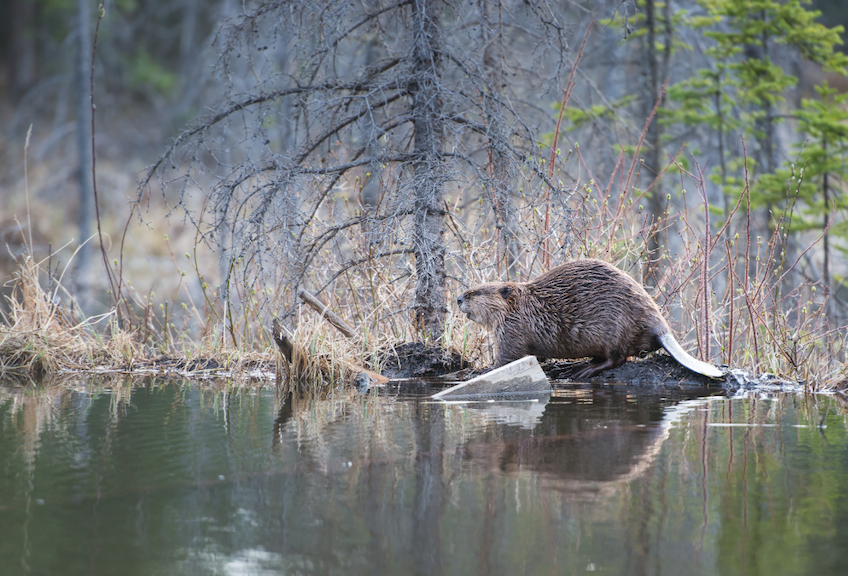Introduction
In a groundbreaking move, the California Department of Fish and Wildlife (CDFW), along with the Maidu Summit Consortium and other partners, has reintroduced beavers into the Sierra Nevada. This marks the first time in nearly 75 years that beavers have been brought back to this region. This effort is a significant step towards restoring the area’s ecological balance and cultural heritage (CA Fish & Wildlife) (Active NorCal).
The Role of Beavers as Keystone Species
Beavers are known as “keystone species.” This means they play a crucial role in maintaining the structure of their ecosystem. Their activities have a large impact on the environment.
Why Beavers Matter:
- Water Retention: Beaver dams create wetlands, which help retain water in the landscape. This increases groundwater recharge, stabilizes summer baseflows, and extends seasonal water availability. This is especially important in drought-prone areas.
- Wildfire Mitigation: Wetlands formed by beaver activity act as natural firebreaks. They provide refuges for wildlife and reduce the spread of wildfires.
- Biodiversity Boost: The habitats created by beaver dams support a wide range of species. This increases overall biodiversity and ecosystem resilience (CA Fish & Wildlife) (Focusing on Wildlife).
Success Stories of Beaver Reintroduction
Methow Valley, Washington: In Methow Valley, beavers have turned degraded streams into thriving ecosystems. Beaver dams have increased water storage, improved fish habitats, and helped mitigate climate change by maintaining cooler stream temperatures in summer (Sierra Nevada Alliance).
Elkhorn Slough, California: In Elkhorn Slough, beavers have played a key role in wetland restoration. This benefits both wildlife and human communities. Wetlands filter pollutants, improve water quality, and provide habitats for various species, including migratory birds and endangered amphibians (CA Fish & Wildlife).
Addressing Concerns and Opposing Views
While the benefits of beaver reintroduction are many, there are concerns about potential negative impacts on human infrastructure. Beavers can significantly alter landscapes, which can lead to conflicts with human activities.
Common Concerns:
- Flooding: Beaver dams can cause flooding of roads, agricultural lands, and residential areas. This can lead to significant economic costs for repairs and mitigation.
- Tree Damage: Beavers fell trees to build their dams, which can impact forestry operations and urban green spaces.
To address these issues, CDFW and other organizations have implemented non-lethal management strategies. These include “beaver deceivers” and other flow devices to manage water levels and prevent flooding. These measures aim to balance the ecological benefits of beavers with the need to protect human infrastructure (Active NorCal) (Focusing on Wildlife).
The Future of Beaver Conservation
The reintroduced beavers in the Sierra Nevada will be closely monitored over the coming years. Researchers will study their population dynamics, habitat use, and broader ecological impacts. This ongoing monitoring will inform future translocations and conservation strategies, ensuring that the benefits of beaver activity are maximized while minimizing conflicts with human infrastructure (CA Fish & Wildlife) (Governor of California).
Get Involved and Learn More
The CDFW’s beaver management and restoration activities are part of a broader vision to use nature-based solutions for ecosystem restoration. By supporting these initiatives, you can help promote the resilience and health of our natural landscapes.
For more detailed information and updates on the beaver translocation project, visit the following resources:
- California Department of Fish and Wildlife (Governor of California)
- Sierra Nevada Alliance (Sierra Nevada Alliance)
- Focusing on Wildlife (Focusing on Wildlife)
Conclusion
The reintroduction of beavers into the Sierra Nevada represents a promising step forward in ecological and cultural restoration. By understanding and supporting these efforts, we can help ensure that beavers and other vital species continue to thrive, enriching the ecological and cultural tapestry of California.
This conservation milestone not only restores a crucial keystone species to its native habitat but also honors the traditional ecological knowledge of the tribes who have stewarded these lands for generations. Join us in celebrating this historic achievement and supporting ongoing conservation efforts to secure a sustainable future for all species.

